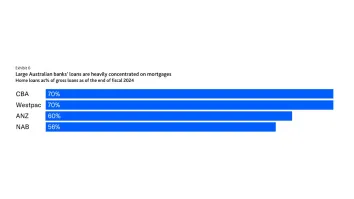How AI is Modernising Data for the Financial Services Industry
By Joe OngIn November, Singapore’s National AI Office (NAIO) collaborated with the Monetary Authority of Singapore (MAS) and the Smart Nation and Digital Government Office (SNDGO) in a programme to strengthen AI capabilities within Singapore’s financial sector by providing financing and access to government data. In fact, even before the pandemic, the financial services industry has already been witnessing an acceleration in digital transformation.
Amidst the changes, organisations in the financial services industry face a unique set of challenges as they consider processing the vast amount of data they collect. It bears the question how technologies such as AI and machine learning can modernise the way in which we address issues related to data across the Financial Services Industry?
Structured and Unstructured Data
In an intensively data-driven industry like financial services, having access to high-quality data is essential for success in a digitised world. This includes both structured and unstructured data. Structured data is data that is highly organised and formatted, such as bank account numbers or health records that are easily searchable in databases. Unstructured data, on the other hand, includes audio tapes or even social media postings which are not as easily retrievable.
This is where the real challenge lies: unstructured data does not have a predefined format and is hence, much more difficult to analyse. However, this does not mean that the information is any less useful. Having greater insight into customer behaviour and engagement, for instance, is central to institutions across industries today. It can be collected through unstructured data. One way to go about this challenge is by extracting specific attributes of the data and then structuring them. Alternatively, natural language processing—a type of machine learning—can help contextualise topics or themes which can then help to provide value.
Another possibility is sentiment analysis. It is an extended version of employing natural language processing along with technologies such as text analysis, computational linguistics, and biometrics that systematically identify, extract, quantify, and analyse unstructured data. This technique is smarter than traditional analysis methods and is used to determine the underlying sentiment for a piece of writing or for a social media post.
Having access to high-quality data is paramount - a great example of this would be hyper-personalisation. Hyper-personalization leverages real-time data and AI to deliver personalised and customised products, services, or content. Consumers today expect personalization. In fact, according to research in July, more than 70% of Singaporean consumers are more likely to repurchase from brands that offer personalised customer experience. Hyper-personalization, hence, greatly relies on the ability to generate quick insights from the structured and unstructured data at hand. At the same time, it also relies on the ability to process the data at hand.
Hyperautomation
With access to high-quality data, the next challenge is considering how to process and use this data efficiently. A staple solution for improving efficiency is eliminating manual processes. From vacuum cleaners to windmills, we humans have always relied on technology in easing our manual work.
Similarly, hyperautomation employs advanced technology, such as AI and RPA, to automate highly manual tasks to the extent where almost any repetitive task can be automated. Apart from increasing efficiency, it has also enabled the financial services industry to lower operational costs and reduce fraud. Hyperautomation is widely seen as the next step towards accelerating the digital transformation process.
It is important to remember that hyperautomation is not based on a singular technology - it relies on integrating several technologies that enable automation. Robotic Process Automation (RPA), for instance, configures software that allows bots to take over repetitive and structured tasks. At the same time, machine learning employs algorithms that allow computers to learn automatically without human intervention. When AI integrates technologies such as RPA and machine learning, companies can then create entire machines that support automation through emulating human logic. Apart from the technologies mentioned above, hyperautomation uses a multitude of other technologies such as big data, chatbots, and cobots that enable end-to-end automation.
Data Security
Last but not least, the financial services industry also has to consider keeping the harvested data safe. Our heavier reliance on digital systems poses a risk to the security of this information. Not only can data get lost due to system failures or get corrupted by viruses, but it is also vulnerable to a plethora of cybercrimes, ranging from fraud and theft to ransomware attacks. As cyberattacks get more sophisticated, security procedures should be in place and be able to predict and eliminate vulnerabilities.
If harnessed correctly, AI-driven security tools can strengthen cybersecurity systems. Artificial intelligence endeavours to simulate human intelligence. It can be trained to detect different vulnerabilities and improve network security over time. In data-heavy industries such as financial services, automated technology enables security systems to quickly parse through massive chunks of data.
AI is not simply an advantage organisations can hope to harness; it is becoming a necessity. Because AI relies on data to become smarter, cybercriminals use the very same technology to spot vulnerabilities. This is where vulnerability management through AI comes in: instead of identifying and mitigating software vulnerabilities manually, AI provides the edge by automating this process and giving organisations time to fix them. The best way to stay ahead of cybercriminals is to use the same technology as them.
The way ahead
As organisations continue to look for new ways to streamline processes and improve efficiency across all boards, there is less denying that AI provides tremendous advantages. With regards to data alone, AI plays an important role in not just extracting and structuring it, but also in processing, using, and protecting it. The adoption of AI technologies across the financial services industry is no longer just a matter of choice but is becoming a strategic imperative.
*****
Joe Ong is the Vice President and General Manager, ASEAN at Hitachi Vantara.




















 Advertise
Advertise










